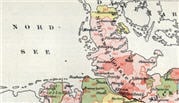Source Information
About Pavia, Lombardy, Italy, Civil Registration Records, 1866-1937
The keeping of vital records for the unified Kingdom of Italy started in 1866. In the southern part of the country, formerly under the Kingdom of The Two Sicilies, it started in 1809 with the exception of Sicily in 1820.
This database contains marriages, marriage banns, deaths, allegati (enclosures or supplemental records), and citizenship records for comuni (towns) in the northern Italian region of Lombardia from 1866-1937. Birth records (Atti di Nascita) are not included, only indexes and birth allegati. This database currently contains records for some towns in the province of Pavia. Some of these towns encompass frazioni (hamlets) and comuni soppressi (historical or extinct localities). Records for these localities will also be found among these records.
Reading the Records:
Depending on the year, these records are either free-form hand written paragraphs or pre-printed forms with hand-written information entered into fields. Records from earlier years are of the hand written paragraph type, while records from more recent years contain the pre-printed forms.
Each record is assigned a record number that is unique to that year. This record number is written (either numerically or spelled out) in the margin. The primary person’s (or people’s) names are usually written below this. This makes searching for a particular person page by page fairly easy.
Sometimes there will be marginal notes written on a record. These marginal notes generally contain other vital information for the individual that the record is about. For example, on a person’s birth record you may see information written in the margin regarding that person’s marriage and/or death.
What Information is Listed:
The amount of information listed for an individual can vary according to record type, form type, year, and the regulations governing vital records at the time they were recorded. However, the following information, generally available for each record type, has been transcribed by Ancestry.
Marriages (Matrimoni):
- Names of bride and groom
- Marriage date
- Bride and groom’s parents’ names
- Marriage place
Additional information may be listed in the record and can be found by viewing the corresponding image. For example, the bride and groom’s birthplaces, residences, and occupations are often listed. If their birthdates are not listed, their ages at the time of the marriage may be listed instead. Moreover, witnesses’ names, age, profession and place of residence are also included.
Deaths (Decessi):
- Name of deceased
- Date of record
- Deceased’s parent’s names
- Place of death
Additional information may be listed in the record and can be found by viewing the corresponding image. For example, in addition to the exact date of death, there will be also listed the age, residence, profession, birthplace, parents’ names, and if married also the name of the spouse of the deceased. Further more, the name, age, profession, and place of residence of the people reporting the death (who are sometimes family members or neighbors) will be also included.
Enclosures (Allegati):
Allegati are enclosures or supplemental records and documents that were needed, in some cases, to compile the actual birth, marriage, or death record. There are many different types of records and documents that could be included as allegati Some examples include notes from hospitals regarding births or deaths, notes from other towns or foreign countries if a birth or death occurred in that place and not the person’s usual place of residence, marriage files, marriage banns, declarations of intention to marry, and birth certificates of the bride and groom.
Information available in the allegati varies greatly according to the types of records and documents included. There may be several pages of records that pertain to an individual or couple. Be sure to view the next few images following the first image on which you locate an individual in order to obtain all possible information from the record.
Marriage Banns (Pubblicazioni):
Pubblicazoni consist of copies of the marriage banns. When a couple wanted to be married it was customary for them to post their intentions in a public place in the comune three consecutive Sundays before their marriage was to take place. These records were copied into volumes or books comprised only of pubblicazioni. The original banns posted in the town may be found in the marriage allegati.Information in addition to the names of the bride and groom is available but is dependent on the specific documents provided for each marriage.
There may not be pubblicazioni records included in this database for every year that there are marriages. Be sure to also check the allegati though for other pubblicazioni records.
Citizenship Records (Cittadinanze):
Citizenship regulations changed in Italy over the years. Examples of reasons for listing individuals on these records includes:
- Italian citizen declares a change in residence (moving in or out of a town)
- Foreign-born individual of Italian parents receives Italian citizenship
- Foreign-born individual living in Italy becomes naturalized and gains citizenship
- Native-born individual with a foreign-born father decides to renounce Italian citizenship and elects that of the father
Indexes:
There are hand-written annual and decennial indexes for many of the records. These indexes have not been transcribed and so are only searchable by image. They are organized according to record type and year. Generally these indexes will list the name of the primary person and their record number. Sometimes the primary person’s father’s and mother’s names will be listed as well. This is helpful for distinguishing between primary individuals who have the same name. Once you have located someone in an index, use the information you’ve gathered to then locate the same individual in the actual records.
 Need help with the Italian language?
Need help with the Italian language?
Find resources in our Italian Research Center.

Help index this collection! The World Archives Project allows anyone to help bring FREE historical records to the public. Simply download the software and select the projects you want to help with. The resulting searchable indexes will be available free of charge on Ancestry.com.